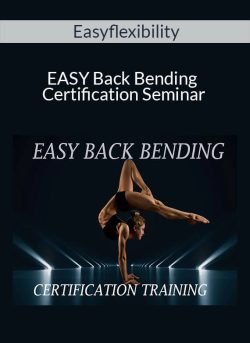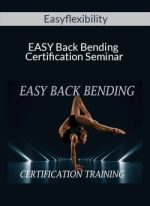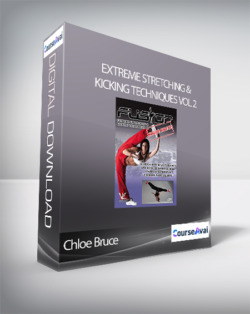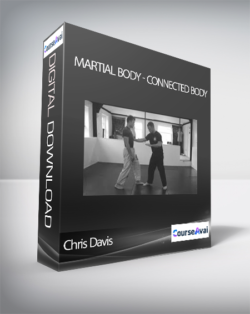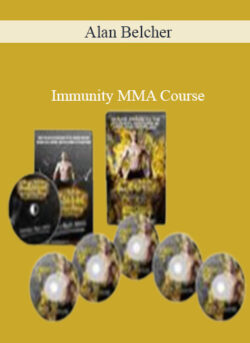Easyflexibility – EASY Back Bending Certification SeminarThe purpose of this course is to teach trainers, instructors, teachers and coaches a fast, safe, and proper Easy Back Bending training method of achieving and maintaining a Back Bend. Back bending a beautiful and useful demonstration of flexibility of the interior structures of musculoskeletal apparatus. A safe, healthy, and well done back bend balances a culmination of elasticity of multiple structures, hip flexors, adductors, quadriceps and core muscles. The purpose of this course is to teach exactly this, how to develop flexibility in every muscle that resists back bending. Not just in a small group of muscles, but in each and every muscle group in the whole anterior chain. A proper back band is a beautiful arch. It can be a King Cobra, it can be a Kapotasana, it can be a Bridge or a Bow, it can be combined with a handstand, it can be seen in a back handspring.A lay person, when thinking of back bending, usually sees a picture of a contortionist pop up in their mind. Unfortunately, in many cases the “YouTube trained contortionists” are the worst offenders, no pun intended, they contort and distort the proper meaning of backbends.Large number of contortionists out there simply fold their body in half, backwards. No flexibility at the hip joint, no flexibility at the thoracic spine, and extreme hyper flexibility in just a few joints of the lower back.Interestingly enough majority of contortionist with deep backbends, or rather back folds, were trained as children where their ligaments were simply stretched and the stronger muscles such as hip flexors for example were almost not touched.There are many back benders that do come from sports such as Rhythmic Gymnastics where as kids they did develop flexibility in their thoracic spine and in their hips, again sadly through forceful stretching.Adult back benders on the other hand, stand very little chance of getting any flexibility from their hips or their thoracic spine if they are simply forced or assisted into a deep back bend. Because their thoracic spine has been stuck in a specific position for a long time, the hips go through the same fate, but with a combination of weak abdominal muscles that stretch easily and the most mobile joints of the lower back the whole back bend will take place in that area.The purpose of this Easy Back Bending Certification Online Training Course is to teach how to avoid all of the issue mentioned above and how to properly distribute the back bend through using both strength, flexibility and awareness so that the back bending can be performed in a healthy manner and applied to various sports and skills. In this EASY BACK BENDING course you will learn:Anatomy & Kinesiology of Back BendingIn this section you will learn which muscles flex the spine, flex the hips and extend the knees. These 3 groups of muscles are the ones that restrict back bending. It’s very important to understand the function of each muscle, where it’s located and what it does, to be able to perform the ZST’s correctly and to understand the workings of other techniques such as Extended Length Conditioning, and other supporting exercises and how they related to maintenance of back bending flexibility, and utilization.The Anatomy and Kinesiology is taught together with ZST’s since ZST’s give a deeper understanding of Kinesiology and understanding the Kinesiology in return gives a deeper insight into how ZST’s are derived and performed.In depths look into ZST’s for Back BendingIn this section Zaichik Stretching Techniques are revisited one more time. The reason for this is because quite a lot of people misunderstand the finer points of ZST’s and having a chance to look at ZST’s again in depth helps to make sure that the techniques are properly understood and performed.In this section you will learn ZST’s for Rectus Abdominis, the Obliques, Psoas, Iliacus, Pectineus, Tensor Fascia Latte, Rectus Femoris, Sartorius, Gracilis, Adductor Magnus, Adductor Longus and Adductor Brevis.Having flexibility in these muscles will allow you to take each joint through its full range of movement. The spinal joints will go through hyperextension, the hip joint will go through hyperextension and knee joint will go through flexion. This back bending flexibility can then be applied to any back bending pose from King cobra to Kapotasana to Bow and so on.Extended Length Conditioning for Back BendingIn this section you will learn a specialized group of retention exercises called Extended Length Conditioning exercises. Extended Length Conditioning exercises allow the body to become comfortable in new ranges attained by Zaichik Stretching Techniques, so that the body can allow the progression deeper and deeper into flexibility as fast and as safe as possible.Reciprocal Inhibition for Back BendingIn this section you will learn specific Reciprocal Inhibition exercises for back bending. Reciprocal Inhibition is a natural concept in the body. The human neuromuscular system is designed in such a way that when muscles contracts, their antagonist muscles relax, this of course saves energy because two opposing muscles do not compete against each other.Antagonist Short Range Conditioning for Back BendingNext you will learn the Antagonist Short Range Conditioning Exercises. These are the exercises that target the antagonist muscles to the ones being stretched. They help with reciprocal inhibition as one of their purposes. And their second purpose very important for a lot of athletes is an ability to utilize the flexibility in skill form. In other words, when anterior flexibility is needed or back bending flexibility is needed and the body has to work or stay move or keep a specific position in a deep bend then antagonist short range conditioning exercises allow the body to utilize that flexibility and of course they also allow the body to become comfortable in a specific range.Movement & Habituation for Back BendingIn this section you will learn the Movement & Habituation techniques for spinal and hip hyperextension. There are two ways for the body to become comfortable in and accept the new flexibility ranges as normal, one of course is strength and the other one is movement. Strength exercises are usually linear and are performed with applicable resistance. Movement and Habituation exercises can be linear but they can have multiple directions and they don’t necessarily have to have resistance, they simply move in a newly developed ranges to get the body accustomed to those ranges. This section presents the Movement and Habituation Techniques for Back Bending.Beginner Back BendingIn this section you will learn a simple Beginner Back Bending routine. This routine has been tested for beginners, adjusted so that its suitable for a beginner student who is lacking strength or flexibility to do more advanced techniques. This is a foundation routine and based on this routine Intermediate, Advanced and Very Advanced routines are based. Here you will learn how to approach a student who does not have any experience in back bending or lacking a specific attribute such as strength, flexibility or awareness and needs to get initiated into back bending.Intermediate Back BendingIn this section you will learn the Intermediate routine. The intermediate routine is for someone who has practiced the back bending for a while possibly by performing relaxed stretches or partner assisted stretches, possibly performing ZST’s and supporting exercises, but this is someone that has a little bit of experience with back bending and when you get a student like that you would use this routine. So in this section you will learn what an intermediate back bending lesson is.Advanced Back BendingHere you learn Advanced back bending routine. It is a sample routine for people that have been practicing for a while and have good understanding of which muscles need to relax and which muscles need to contract and looking to go deeper into back bending. The advanced routine contains modalities incorporated into ZST’s thus allowing deeper stretches in the ZST’s, this is something that is not recommended to start with but rather for students that have an already good experience with the Zaichik Stretching Methodology.Very Advanced Back BendingWhen you learn Very Advanced routine you will also use ZST’s with modalities, however the supporting exercises are going to change allowing the body to maintain deeper flexibility, thus allowing a student to continue advancement in their back bending training. Each of the routines you will learn demonstrates two rounds, there is an increase of difficulty from round 1 to round 2 in each routine, so effectively there are 8 levels demonstrated in all 4 full routines.Once you learn these 4 routines with experience you will be able to come up with your own routines and at the same time you will be able to apply any one of these routines to your students at their appropriate level and take them up the levels as they become stronger and more flexible.Cool Down/Relaxed Stretches Options for Back BendingIn this section you will learn how to cool the body down after a back bending routine. Three cool down options are presented, the goal of the cool down is to relax all the muscles that have worked throughout the routine. Many people assume that it’s the antagonist muscles that need relaxes stretches at the end and this may be applicable somewhere else but in EasyFlexibility system, because we perform Extended Length Conditioning, Movement & Habituation and other exercises there’s also contraction in the muscle that is being stretched so they receive relaxed stretches at the end together with other muscles. The goal of relaxed stretches is not to increase the range of motion but to cool down the body and facilitate faster recovery.EASY Back Bending Certification Multiple Choice Questions TestThe test at the end of the seminar will check your understanding and make sure that you know the information well enough to be able to be certified and practice it and/or teach it to your students. The multiple choice questions will test how much you understand specific exercises, different concepts and also your understanding of how to put together specific routines for yourself or your students.Sale page: https://www.easyflexibility.com/products/easy-back-bending-certification-online-courseArchive: https://archive.ph/9cYE5Delivery Method– After your purchase, you’ll see a View your orders link which goes to the Downloads page. Here, you can download all the files associated with your order. – Downloads are available once your payment is confirmed, we’ll also send you a download notification email separate from any transaction notification emails you receive from esygb.com. – Since it is a digital copy, our suggestion is to download and save it to your hard drive. In case the link is broken for any reason, please contact us and we will resend the new download link. – If you cannot find the download link, please don’t worry about that. We will update and notify you as soon as possible at 8:00 AM – 8:00 PM (UTC+8).Thank You For Shopping With Us! Reviews There are no reviews yet.Be the first to review “Easyflexibility – EASY Back Bending Certification Seminar” Cancel replyYour rating *Rate…PerfectGoodAverageNot that badVery poorYour review *Name *Email *Δ
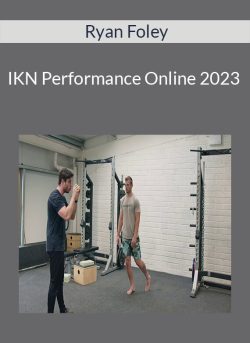 Ryan Foley – IKN Performance Online 2023
₹8,632.00
Ryan Foley – IKN Performance Online 2023
₹8,632.00
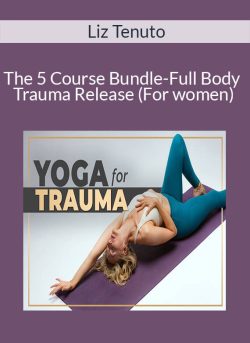 Liz Tenuto – The 5 Course Bundle-Full Body Trauma Release (For women)
₹14,110.00
Liz Tenuto – The 5 Course Bundle-Full Body Trauma Release (For women)
₹14,110.00
Easyflexibility – EASY Back Bending Certification Seminar
₹23,074.00

